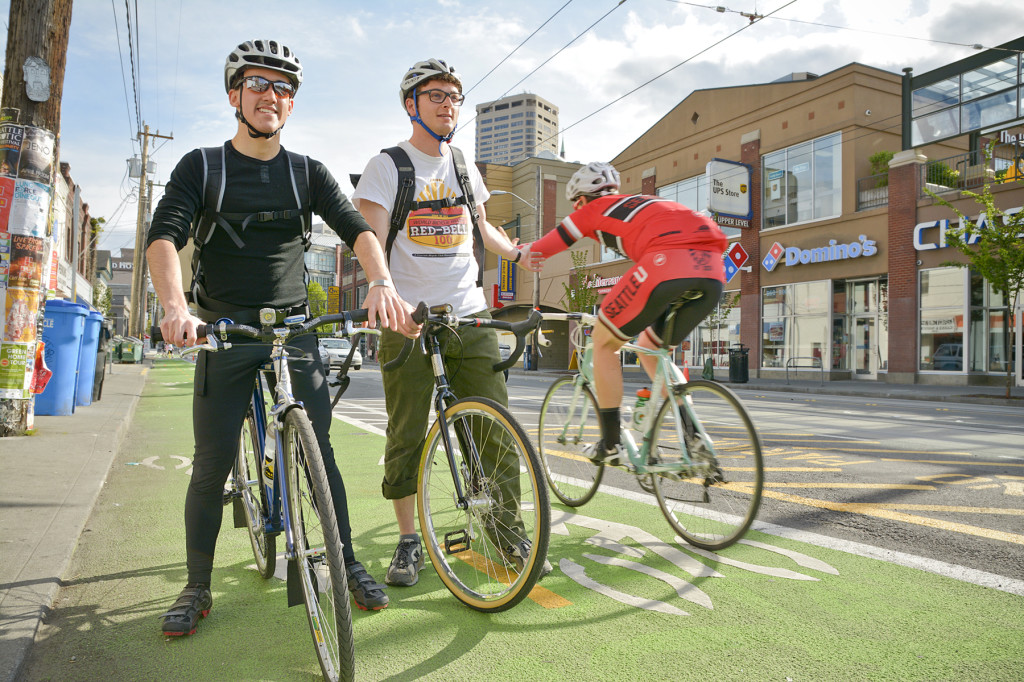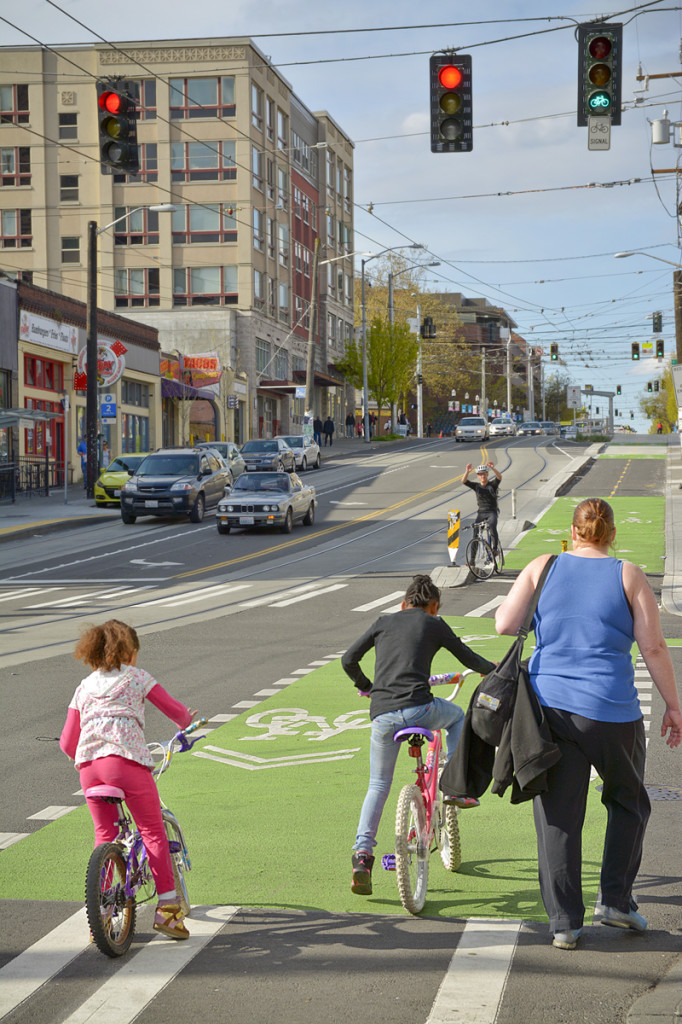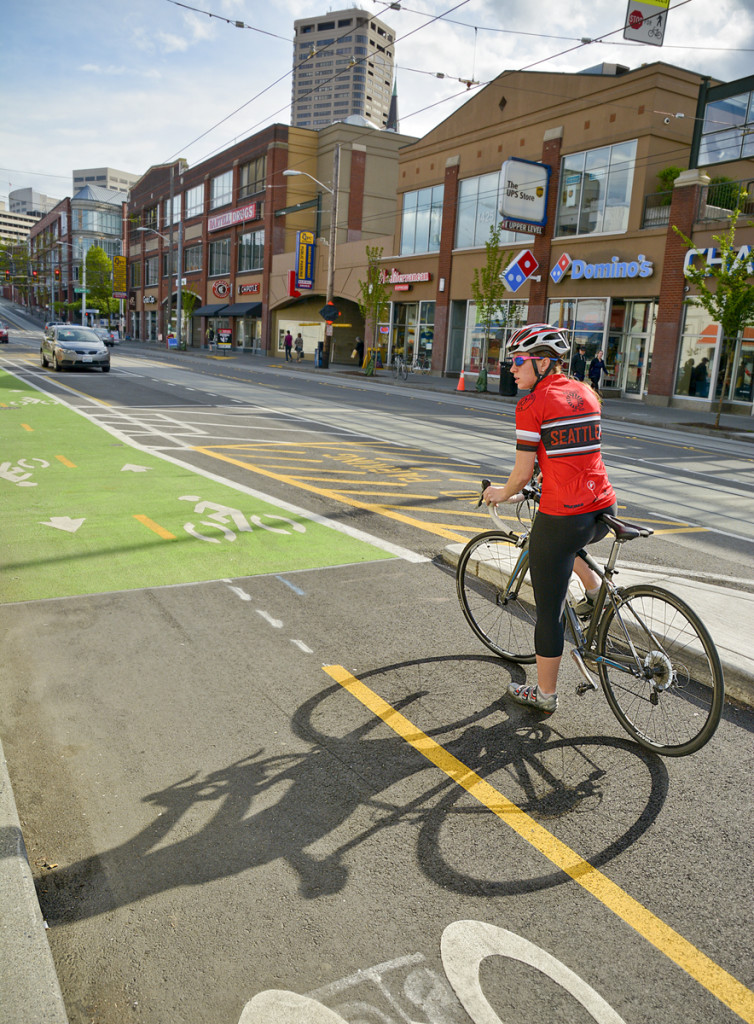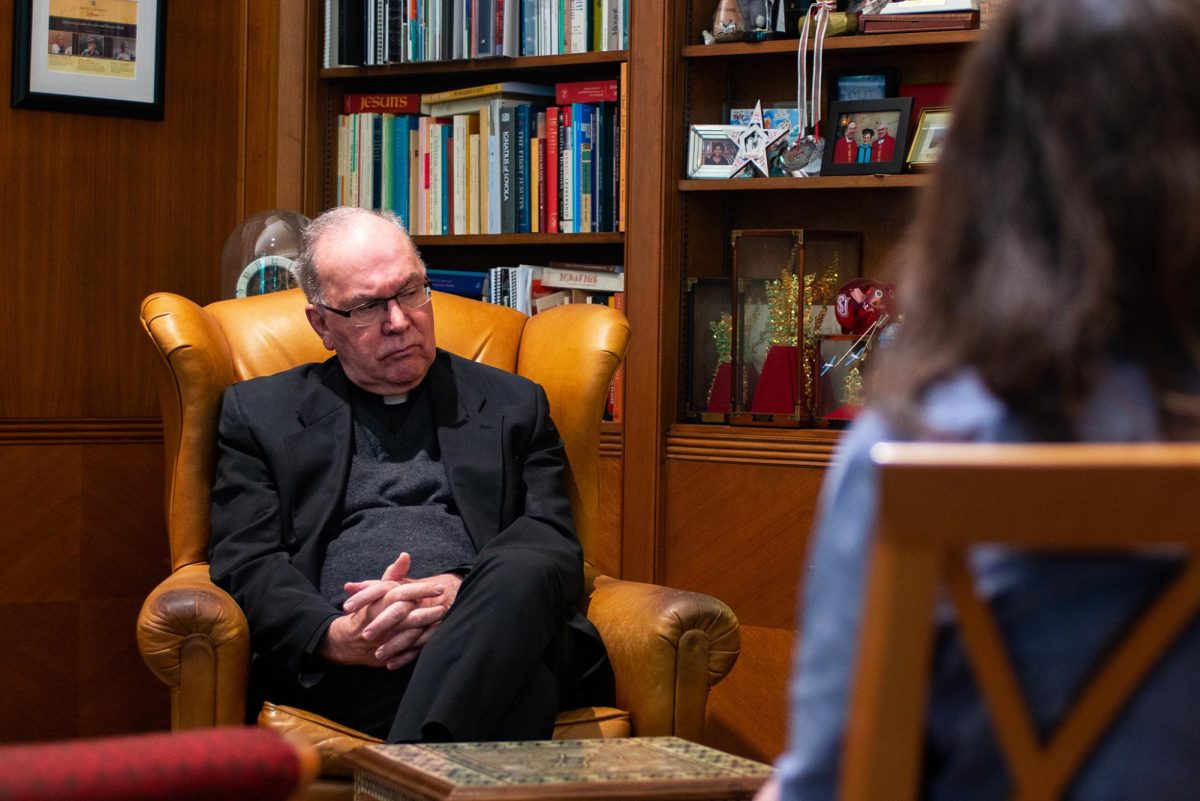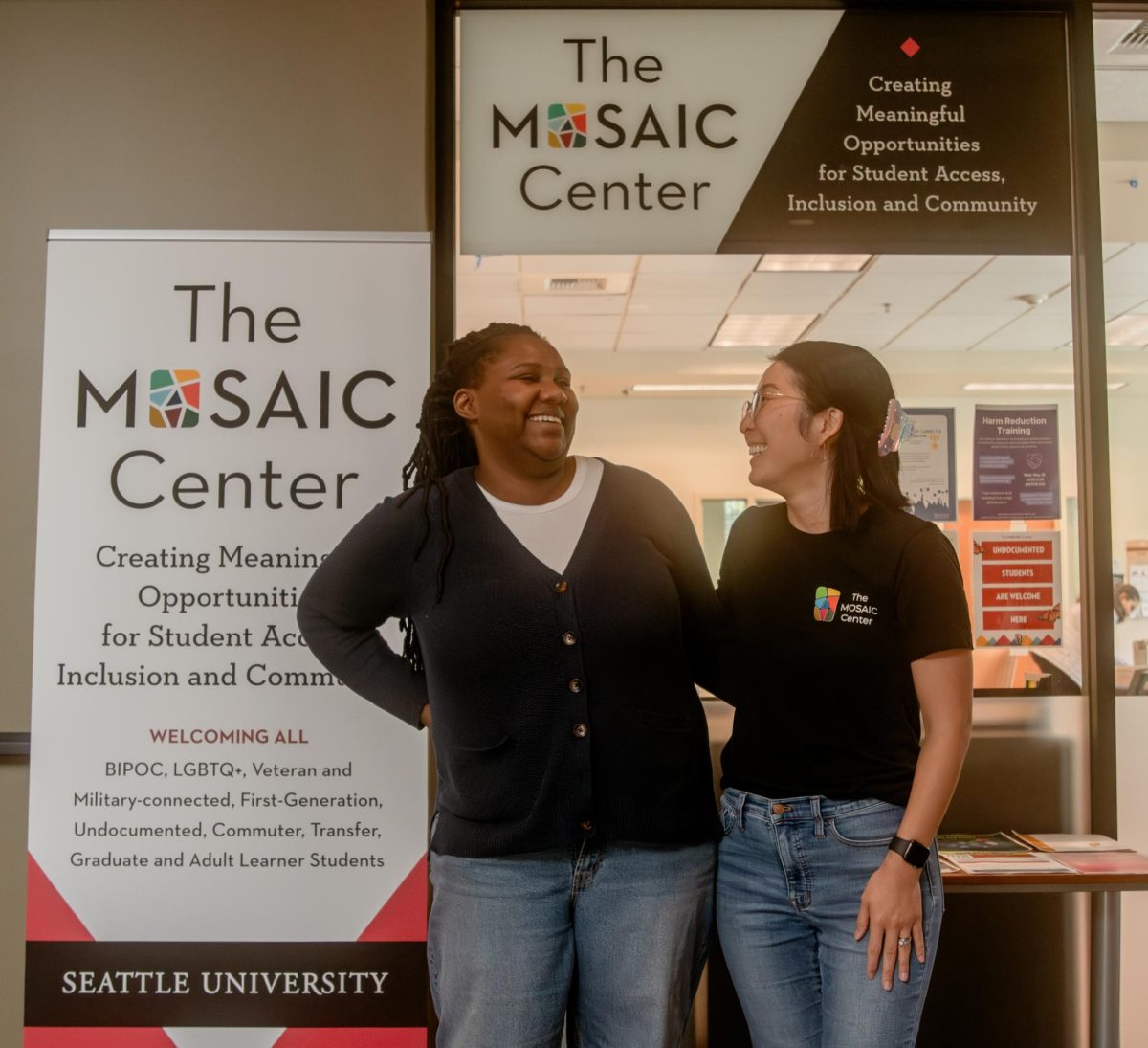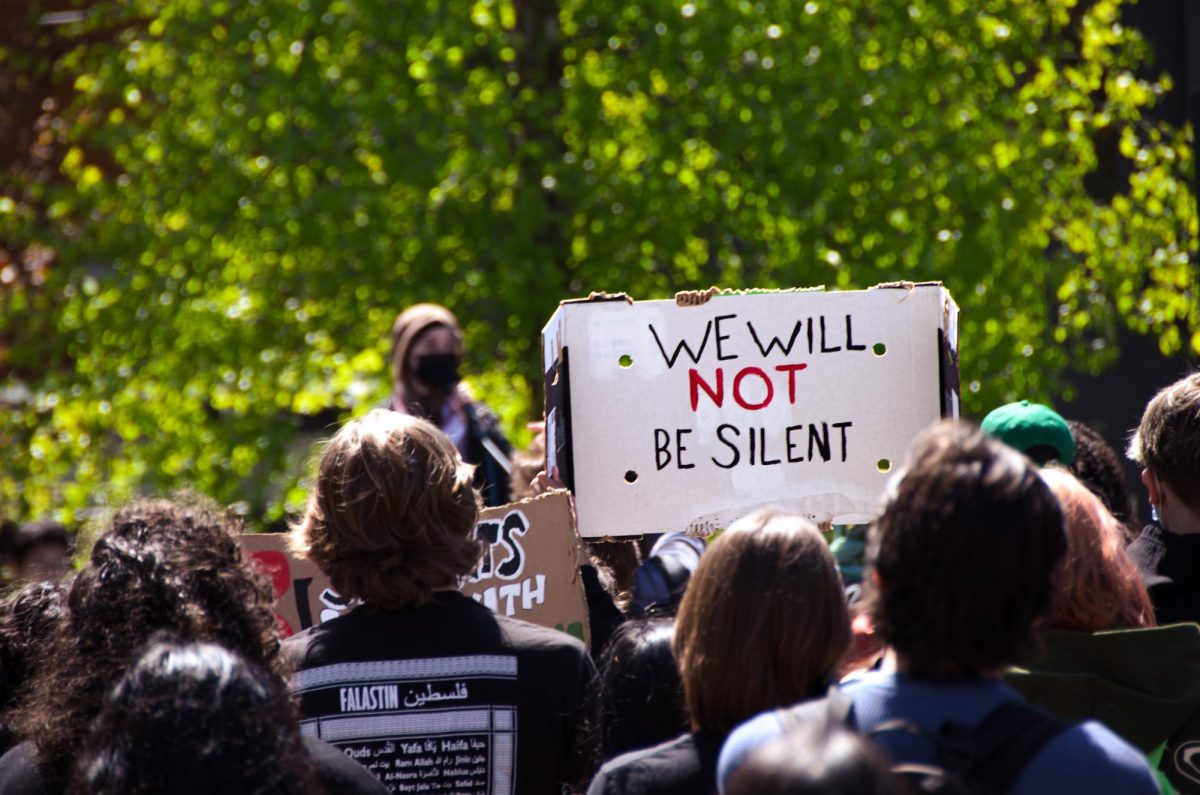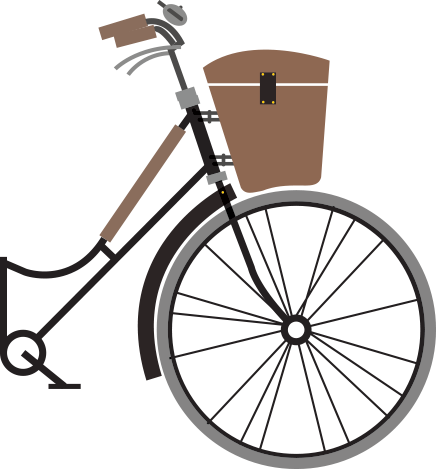
The Alliance for Biking and Walking just named the Emerald City the second-safest city for walking and biking commuters. Coming in solely behind Boston, Seattle is reported to have the second lowest rate of pedestrian deaths, as well as the eighth lowest rate for commuting cyclists’ deaths, with an average of 2.7 fatalities per 10,000 commuters for each statistic, according to the alliance’s study.
The city is putting the pedal to the metal on other bike plans as well.
On April 21, the Seattle City Council approved the newly revised Seattle Bicycle Master Plan with a unanimous vote. Through the newly adopted plan, the city will be laying out 474 miles of bikeways, which include more than 100 miles of protected bike lanes and more than 250 miles of neighborhood greenways.
Policy & Government Affairs Manager of Cascade Bicycle Club Brock Howell said that the club’s main priority is to fund this plan.
“The sooner we build our planned network of protected bike lanes and neighborhood greenways, the sooner we’ll have a Seattle that’s worthy of national compliments,” he said.
Yet, until the construction is completed, scheduled for taking almost 20 years, cyclists Seattle U Cycling Club members David Polansky and Nick Martinez will have to be wary on the roads.
“Seattle’s biking scene is definitely better than Honolulu, but I also think that there is a point here of ‘strength in numbers,’ which makes bikers more visible,” Polansky said. He began biking more regularly in his home state during his junior year of high school. “Bicyclists have to be so much more aware, since they don’t have that protection in comparison to cars.”
Martinez admits that, while he believes Seattle has a safer biking infrastructure than his home state of Connecticut or New York, there are still questions to be asked about the level of safety.
“You have to also think, you know, safer compared to other cities that have a worse biking scene,” he said. “We may be safe enough to be number two, but how safe are we really?”
In the alliance’s recent study, scientists paid special attention and decided on Seattle’s ranking through the city’s strong advocacy programs and increased awareness among drivers. Drivers are reported to be much more aware of cycling and walking commuters in the city, which makes for an even safer and more cognizant atmosphere for all Seattleites. According to the study, one in eight Seattle commuters chooses to either bike or walk.
While there have been many changes and construction to aid walking and bicycling commuters, one should remember that Seattle is still listed in the study as being in 48th place in per capita spending on bicycle and pedestrian projects. Currently, and for the past few years, many Seattle U students have seen the bike lane construction along the
Pike/Pine corridor.
Yet, these construction projects only represent a small part of better bike resources throughout the city. The Burke-Gilman trail, a 27-mile multi-use trail that runs from Ballard to Lake Washington, currently has a detour for the University of Washington Link Light Rail Station’s installation.
According to Polansky and Martinez, construction is a hindrance to their commutes, but should be expected in the city.
“[Construction] always seems to be popping up, whatever road you’re on—it is something to be more aware of,” Polansky said. “It still doesn’t feel safe to merge into traffic when you’re used to a bike lane being there; not everyone is happy with the mix.”
Martinez agrees, listing the Pike/Pine corridor around 12th Avenue and E. Madison Street and Yesler Way toward Broadway Avenue E. to be major problems for bikers. Martinez describes these areas for cyclists as “two separate beasts that are a little bit more anxiety-ridden and a little bit more frustrating,” as well as dangerous.
“[In the new rail construction,] you can get your wheels caught, the areas are slippery, and they are generally not well-secured ground to be riding on,” he said. “You just need to change up your route a little bit, and take the safety precautions to find different means to get where you’re going.”
Howell said via email that, as a bicyclist himself, he has had trouble with new construction around the city, which makes his work even more pertinent to his fellow cyclists. “[These problems] are why I work everyday to create more order on our streets by building better bike lanes and creating safer routes through our residential neighborhoods so that more people can ride a bike and enjoy its benefits,” he said.
Cascade Bicycle Club is a nonprofit community organization that hosts the largest bicycling club in the U.S., with more than 15,000 members. Through Howell’s work with the organization, the Cascade Bicycle Club is set on aiding cyclists as the city transitions into a “bicycle revolution,” which has been seeing prominence within the last seven years.
“Now bicycling is the fastest growing mode [of transportation] in the city—up 78 percent between 2005 and 2012,” Howell said. “With a new Bicycle Master Plan, we’re onto Phase 3: building protected bike lanes and neighborhood greenways to make bicycling safe for people of all ages and abilities everywhere in the city.”
Aside from the dangers of construction as well as city vehicles that cyclists like Howell, Polansky and Martinez have faced, it is also important to remember that even for such a low rate of fatalities, 2.7 commuters out of 10,000, there are still many issues to be addressed.
Within the last few months primarily, there have been quite a few accidents and reported deaths involving cyclists throughout Capitol Hill. The intersection of Pike Street and Boren Avenue has had a long history of being a tragic area for car versus bike collisions. As reported by an article in Capitol Hill Seattle Blog, a rider in his 20s was struck on March 13 around 7:30 a.m., and transported to a hospital to check for a possible back injury. More recently, on April 19 at approximately 12:16 a.m., a cyclist was killed at the same intersection after striking a Kia SUV hit them.
With accidents and deaths like these occurring and causing major distress, Howell states that it is even more important to start work on the Seattle Bicycle Master Plan as soon as possible.
“Everyone deserves to be able to get where they’re going safely. We can create order on our streets so drivers, bicyclists, and pedestrians all intuitively understand how to safely travel without endangering others,” he said. “Even if we were the safest city in the country, if even one person dies or is seriously injured as the result of a collision with a vehicle, we have failed. We must always do better.”
Aside from fatality rates for bicyclists and pedestrians, the summary of the study shows Seattle at fourth place in commuter bicycling and walking levels, 18th place in the percentage of those getting recommended physical activity through bicycling and walking, and at 48th place in per capita spending on bicycle and pedestrian projects. Of each study, 52 major metropolitan areas were focused on, with Portland, San Francisco, and Honolulu appearing in the top 10.
Seattle is also said to have a bicycling and walking rate of 11.9 percent, which is due largely to the city’s temperate weather.
According to their website, the Alliance for Biking and Walking is a “coalition of over 200 groups throughout North America” which focuses on creating, strengthening and uniting “state and local bicycling and walking advocacy organizations.” As issues such as cuts in public transportation and health factors become more dominant in the 21st century, “more and more North Americans want to live, work, and play in neighborhoods where it’s easy and safe to walk and bike,” according to their website.
These ideas will play out in the month of May, also known to local cyclists as Seattle Bike Month. In order to further demonstrate cycling benefits, the Seattle U cycling club will be hosting numerous events, including group spin sessions and bike maintenance parties, as well as giving out bagels to all on-campus bike commuters on Fridays. Cascade Bicycle Club will also be hosting events, among which include Bike Happy Hours at bars throughout the city and their 10th annual Bike to Work Breakfast May 6 at the Seattle Sheraton.
Overall, all cyclists in the city want others to join in the ever-growing community to lead to an even safer method of transportation.
“[Cycling] is really the closest thing to flying, with the freedom to go anywhere and do anything,” Polansky said.
“It’s a long and rewarding journey to be a cyclist—it’s a vehicle of joy. Every time I bike, it’s like I’m going for my first ride; it really does open your eyes and help you feel alive,” Martinez said.
Grace may be reached at [email protected]






